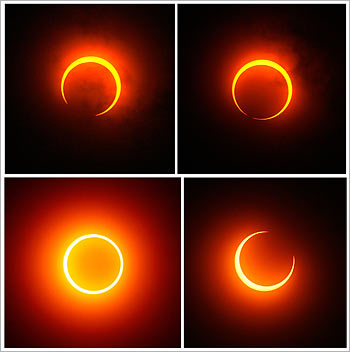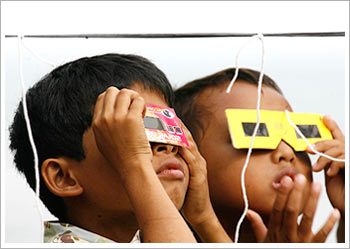
The longest solar eclipse of the millennium began around 11 am this morning and is expected to finish around 3:15 pm, with the maximum eclipse to be witnessed at 1:39 pm.
The people of Delhi, Tamil Nadu, Mumbai, Varanasi, Chennai, Kurkshetra and Kerala are witnessing the solar eclipse at present.
The photosphere of the sun will be covered by the moon and form a ring of fire in the sky for more than 10 minutes in some parts of India.
If you know the dos and don'ts, a solar eclipse can be an event to remember. Warnings will probably be posted all over the place of sighting, but, here's reinforcing a few musts:

